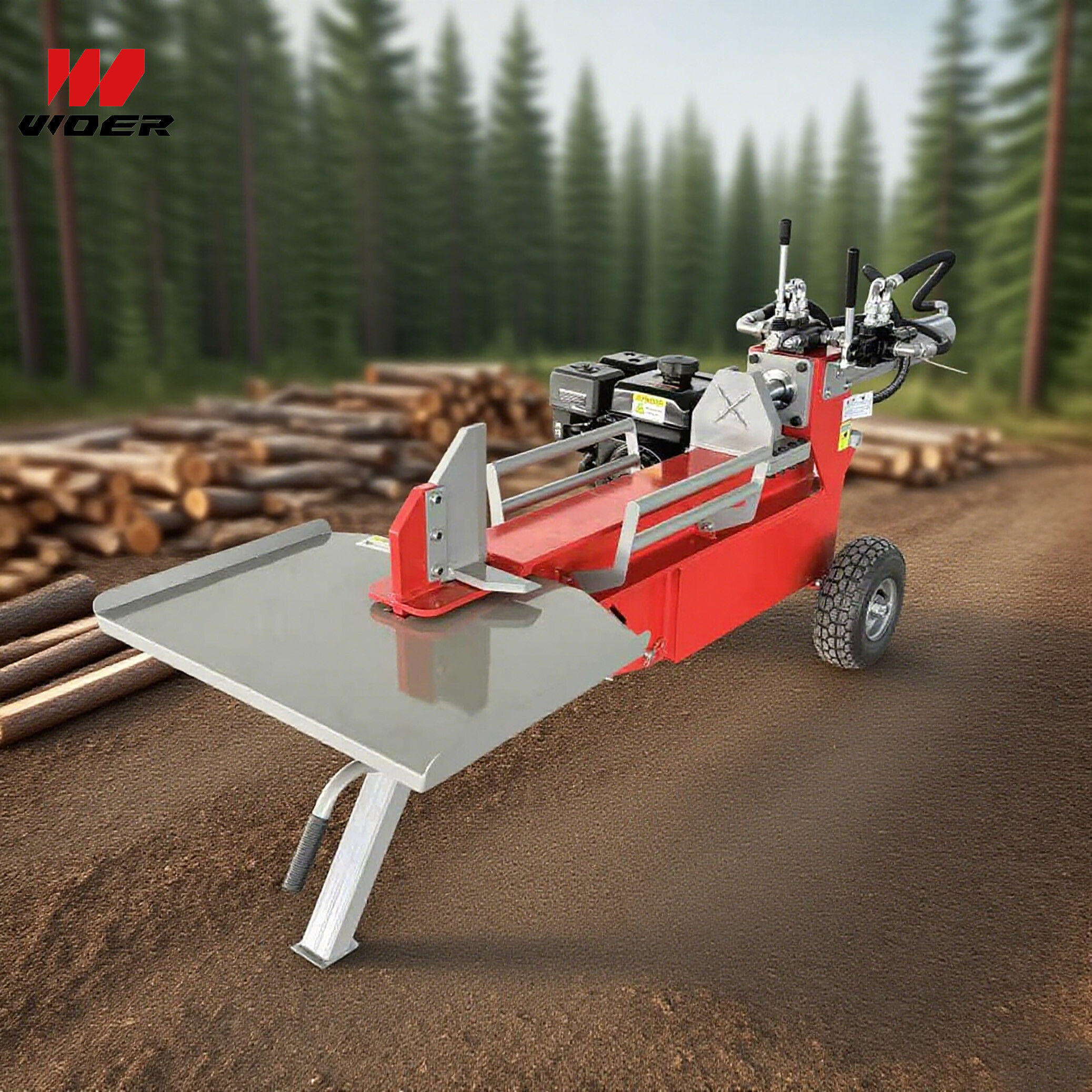Navigation
Contact us
Phone
Message

How an electric log splitter saves money: core drivers
The primary sources of operating-cost savings with an electric log splitter are lower energy cost, reduced routine maintenance, quieter operation, fewer consumables and simpler integration into workflow. Unlike a log splitter gasoline model that burns fuel and demands frequent engine servicing, an electric log splitter converts grid energy directly into splitting force with higher mechanical efficiency and fewer moving parts.
Energy and fuel comparison
Electric motors commonly used in log splitter electric designs run at high efficiency (typically 85–95%). Using conservative assumptions—3 kW motor, 1 hour of operation per day, electricity at $0.12/kWh—the annual energy cost is roughly $131. In contrast, a comparable gasoline engine that consumes 0.5–1.0 L/hour at $1.00/L yields annual fuel costs several times higher under the same duty cycle. For larger industrial shifts, these differences compound and become a principal operating expense line item.
Maintenance, consumables and labor
Hydraulic log splitter and hydraulic components require periodic hydraulic fluid changes, filter replacements and pump service. Gasoline engines require oil changes, spark plugs and carburetor servicing. An electric log splitter reduces many of these tasks to minimal inspections: electrical connections, motor bearings and occasional gearbox lubrication where applicable. That lowers both parts expense and skilled labor hours, which appeals to procurement and financial approvers balancing total cost of ownership (TCO).
Technical performance and lifecycle benefits
Electric units deliver consistent torque from start to finish and avoid the performance drop associated with a low-engine-rpm condition. For tasks requiring frequent cycles, electric log splitters offer better duty-cycle performance and lower thermal management complexity compared with some hydraulic systems. This translates into higher throughput and less unscheduled downtime—data points that matter to operations managers and contract execution teams.
Common performance metrics
- Split force (tons): 5–30+ depending on model.
- Cycle time: 5–12 seconds per stroke for many electric units, enabling sustained throughput.
- Duty cycle: electric designs can be optimized for intermittent to continuous use with appropriate motor cooling.
Cost comparison table (illustrative)
Use cases: who benefits most from electric splitters
Facility managers and enterprise buyers often select electric log splitter models for indoor workshop use, remote work sites with generator-supported power, or municipalities constrained by noise and emissions ordinances. An electric log splitter electric or vertical log splitter model is especially attractive where repeated duty cycles and operator comfort are priorities. For users seeking budget options, models tagged as log splitter for sale cheap should be evaluated for long-term TCO, not only upfront price.
When gasoline or kinetic models still make sense
Remote locations without reliable electrical supply or heavy-duty applications requiring extreme force may still justify a log splitter gasoline or kinetic log splitter choice. Kinetic systems can deliver very fast cycle times for high-throughput logging operations but often cost more in replacement parts and specialized maintenance.
Procurement checklist and technical evaluation
Technical evaluation should include:
- Required split force and cycle time for target wood types (hardwood vs softwood).
- Duty cycle and cooling requirements for continuous operation.
- Power availability (single-phase vs three-phase) and required starter protection.
- Emissions, noise levels and workplace safety features (CE marks, emergency stop, guards).
- Total cost of ownership analysis including energy, consumables and labor over 3–5 years.
Standards, safety and compliance
Choose equipment that complies with machine safety standards, for example EN ISO 12100 for risk assessment and CE marking for European markets. For electrical safety and electromagnetic compatibility, compliance with relevant EN/IEC standards is advisable. Documented maintenance procedures and certified spare parts provide traceability for procurement and contract execution processes.
Common misconceptions clarified
Myth: Electric machines lack power. Fact: Modern electric log splitter models deliver comparable tons of force and sustained torque suited for commercial workloads. Myth: Electric costs are higher. Fact: Lower energy rates, reduced maintenance and higher uptime typically make electric splitters cheaper to operate over their lifecycle.
Case vignette
A mid-sized pallet manufacturer replaced two gasoline splitters with electric units and reported a 35% reduction in annual operating expenses attributable to fuel savings and lower maintenance hours. Production throughput rose 12% due to more consistent cycle times and reduced idle time for engine warm-up.
Next steps
Contact our technical sales team for a tailored total-cost-of-ownership comparison between an electric log splitter, a hydraulic log splitter and a log splitter gasoline unit. For buyers focused on low capital outlay, be cautious of a log splitter for sale cheap listing without lifecycle data. A brief site survey and sample throughput estimate will usually identify the model that minimizes operating costs over the equipment lifetime.

This stunning beach house property is a true oasis, nestled in a serene coastal community with direct access to the beach.
Contact
West Street, Melbourne Victoria 3000 Australia